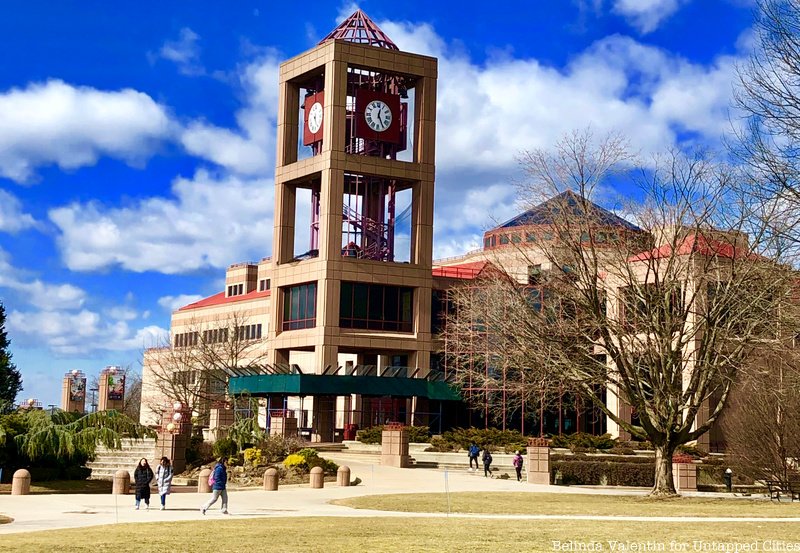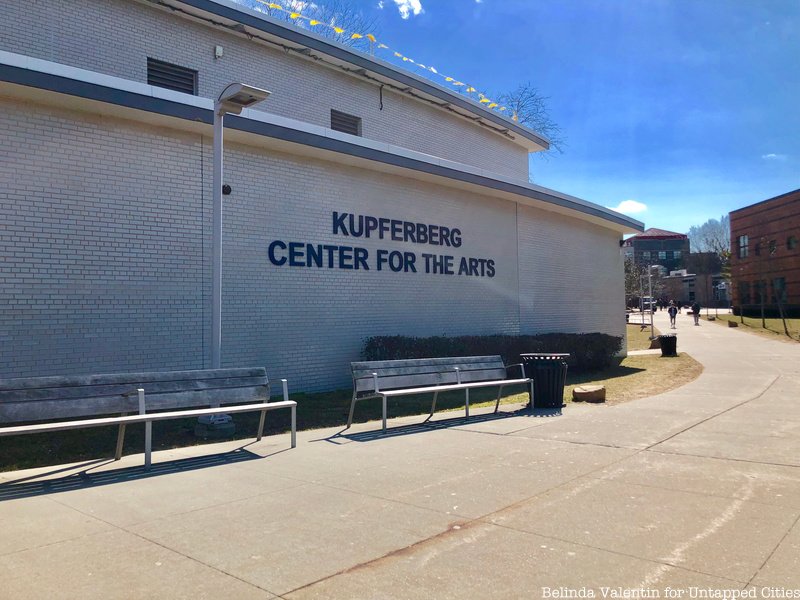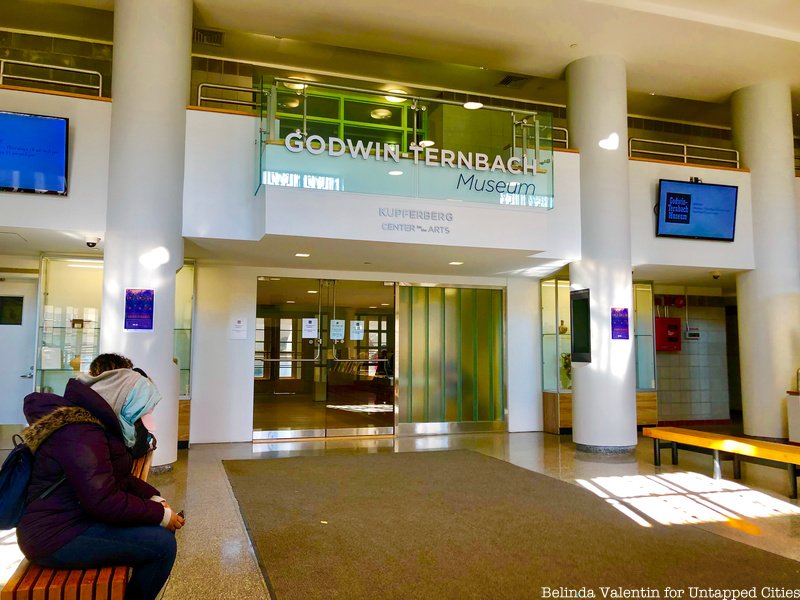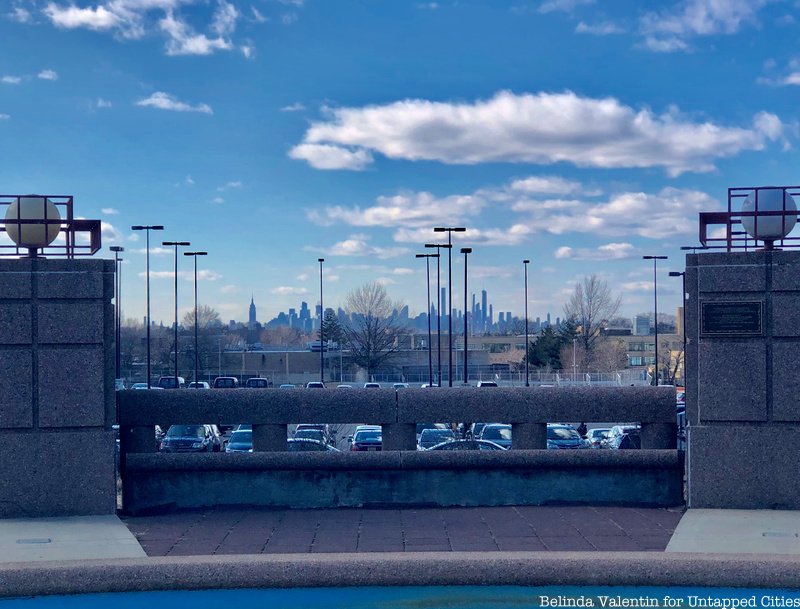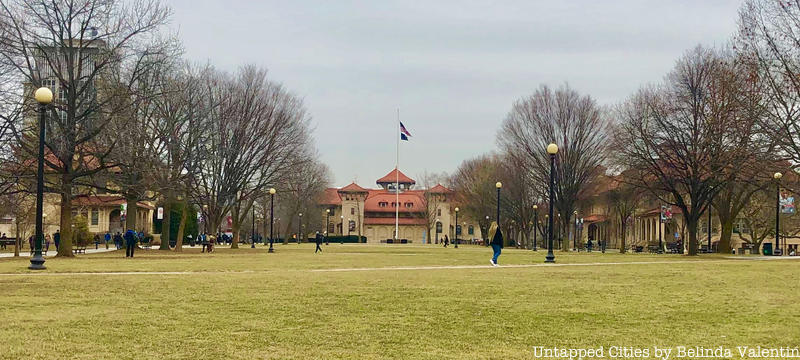
Queens College, located in Kew Gardens Hills, is one of the largest four year institutions in the City University of New York and is well known for its contributions to research, affordability, and notable alumni such as Jerry Seinfeld, Paul Simon, and Fran Drescher. It remains, however, one of the more unsung heroes of CUNY’s school system with many hidden gems within the institution. From animals that greet students on their way to class, former schools that once sat on the campus, niche places to relax, to its contributions to the arts, Queens College is full to the brim with interesting secrets.
1. Queens College Is Next to a Little-Known Farm
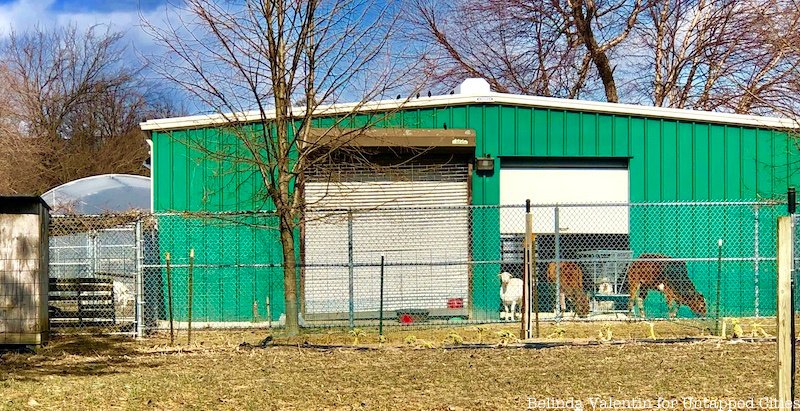 Pictured from left to right: a pony, two ducks, a sheep, two calves, and an alpaca.
Pictured from left to right: a pony, two ducks, a sheep, two calves, and an alpaca.
Of all the many sights and sounds of bustling Queens college, the most unexpected, and unique, come from the miniature farm next to Queens Hall. The farm is property of the nearby John Bowne High School Agricultural Program. The program has been nationally recognized for its contributions to urban agricultural education, and locally recognized for the adorable animals that greet Queens College students on their way to class. Some of its notable residents are sheep, ducks, alpacas, and calves that appear throughout the day.
2. Architectural Remnants of Queens College’s Past Life
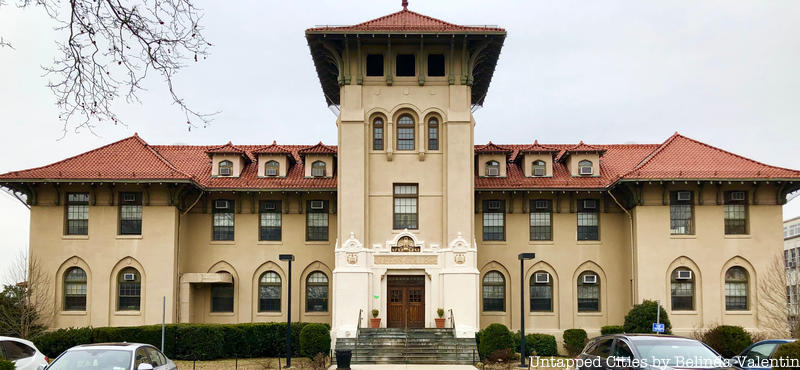 Jefferson Hall, former main administration building for the Parental Home.
Jefferson Hall, former main administration building for the Parental Home.
One of the college’s most defining features is the eclectic mix of architectural styles found throughout its 77 acres. Jefferson, Delany, and Colwin Halls are the oldest structures, having been built in the early 1900s as part of a “Parental Home for Incorrigible Boys and Truants”, which shut down after a very scandalous few years. The Parental Home had an main administration building, three dormitories referred to as cottages, and a power plant. They were designed in a Mission Revival style by C.B.J. Snyder, Superintendent of School Buildings in New York City. Throughout the 80 year history of Queens College, numerous buildings were added in varying styles, with each decade leaving a very unique mark on the campus.
3. The Many Lives of Queens Hall
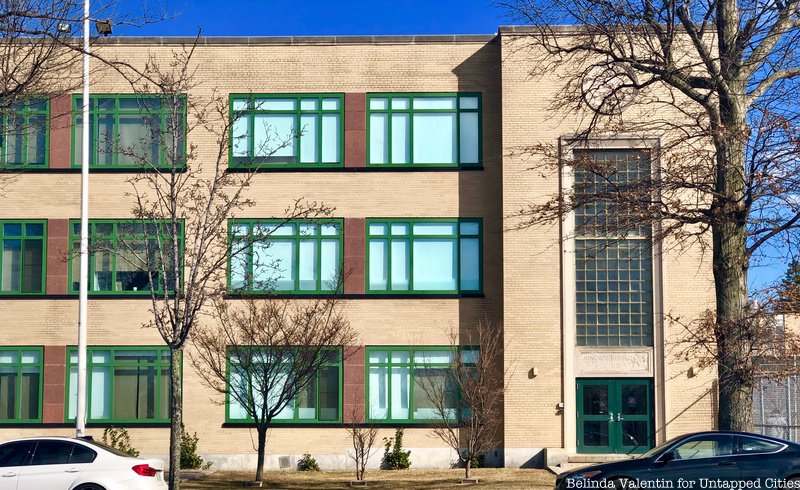 Back exit of Queens Hall. The sign above the door reads, “Junior High School 218”.
Back exit of Queens Hall. The sign above the door reads, “Junior High School 218”.
Right next to the John Bowne High School farm is Queens Hall, the furthest building from the main campus. Queens Hall is notable for having housed three different institutions within its walls. It first began as Campbell Junior High School, which unfortunately gained a reputation for unsafe conditions in the late 1970s. The school eventually closed in 1982 and was turned into the CUNY School of Law in 1986. The building then became formally integrated into Queens College in 2012, after the CUNY School of Law moved to a new campus in Long Island City. Queens Hall now houses the speech communications and language departments and is infamous among students for its inconvenient location in relation to the rest of campus.
4. Seek-and-Find Tributes at Queens College
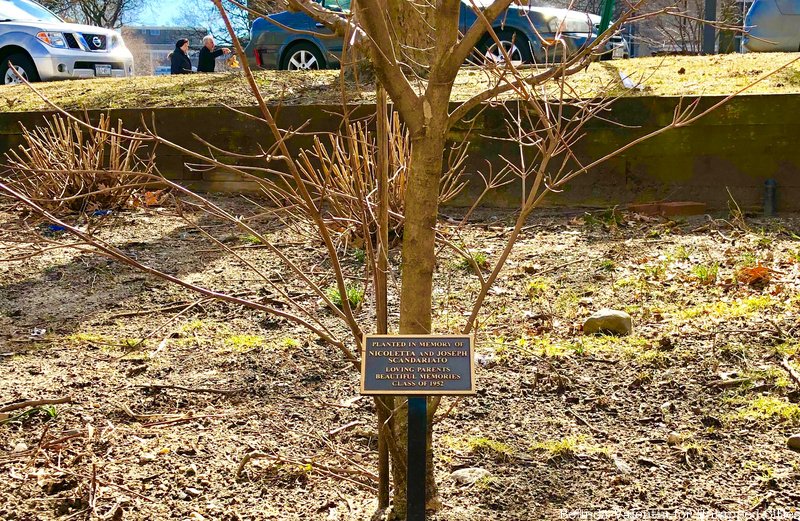
Throughout the 80 year history of the college, thousands of people have left their marks in numerous ways. Whether their names adorn buildings, rooms, or very small plaques, the college is home to several mini-tributes hidden around the campus. These plaques are dedicated to several different individuals, from alumni to faculty and staff. Most of them have little anecdotes about the people mentioned or their experience at Queens College. When walking around the campus, keep a keen eye out for the tiny plaques and names, you never know who’s stories you’ll see!
5. Memorial Hidden in Plain Sight in Queens College
One of the largest tributes on campus is often overlooked and has a connection to one of the many protests of the Civil Rights Movement, specifically the Freedom Summer of 1964. During the Freedom Summer, James E. Chaney, Michael H. Schwerner, and Andrew Goodman were killed for attempting to register black people to vote. Their murders brought nationwide attention to the significance of the activism prevalent in the Civil Rights Movement. At the time, Goodman was a student at Queens College set to graduate the following year. The trio were memorialized with the addition of the Chaney-Schwerner-Goodman Clocktower, located outside of Rosenthal Library. It is a testament to Queens College’s continued support of social causes.
6. The Largest Arts Complex in Queens
Queens College is proud to be a host of the Kupferberg Center For The Arts, a collaborative multi-disciplinary arts complex that seeks to expose the community to many different types of creative works. They have held many different performances on and off campus by different artists such as Jerry Seinfeld, David Bowie, and Patti LaBelle. The center also hosts stage productions of popular children’s stories for elementary school field trips. The shows happen year round and tickets are available for anyone that’s interested, so be sure to check them out!
7. Queens College is Home to a Jazz Icon
 Courtesy of the Louis Armstrong House Museum
Courtesy of the Louis Armstrong House Museum
One of the many institutions that belong to the Kupferberg Center complex is the Louis Armstrong House Museum, which focuses on the life and music of Louis Armstrong and is located in his former home in Corona. The museum is partially funded by Queens College and is a registered historic landmark. Visits to the museum (which have also been offered to members of Untapped Cities Insiders in recent months) include a 40-minute guided tour of the house and adjacent garden. It is truly an underrated gem of jazz history that is conveniently nestled in the heart of Queens.
8. A Little-Known, Free Museum at Queens College
Another portion of Kupferberg Center’s complex is quite hard to spot when visiting Queens College. The Godwin-Ternbach Museum, located in Klapper Hall, houses pieces from a multitude of renowned artists that originate in various periods throughout history. These pieces are often strategically arranged in collections that aim to teach visitors about a topic or concept. The museum is also completely free of charge and open to the public so that anyone that wishes to see some amazing art can do so.
9. A Secret Hideaway at Queens College
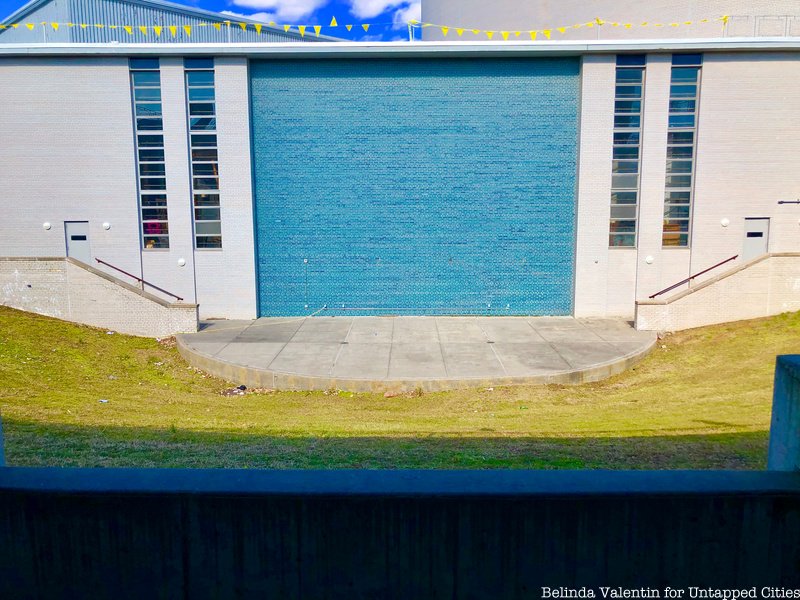
College life tends to be quite stressful and overwhelming, as a result, many schools have relaxed, less busy areas in order to create a balance. Queens College achieves this by utilizing the sprawling hills that it was built on. An area of refuge for many students is the amphitheater, tucked away behind Rathaus and King Halls. The area is essentially benches surrounding a lush, grassy hill that leads to a small stage that is sometimes used by the nearby drama department. During the warmer months, students may be seen enjoying a nice lunch or study session, and some professors teach their classes there, weather permitting. The amphitheater is one of the more hidden gems that add charm to the college.
10. The Perfect View of NYC at Queens College
Although Queens College is located deep in Queens, the rolling hills of the area allow for some stunning views of the city skyline. The best place to see it is at the fountain in between the Science Building and Rosenthal Library at the end of the quad. The college’s placement on the top of one of the highest points in Queens makes it an interesting and unique vantage point to snap the perfect panorama.
Hungry for more school secrets? Check out The Top 10 Secrets of Fordham University!






